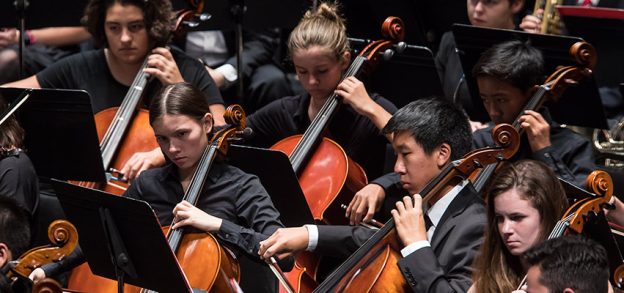Title: Cello Superstitions
General Information about Item:
- Superstition folklore
- Language: English
- Country of Origin: United States
- Informant: Annette Chen
- Date Collected: 2-25-18
Informant Data:
- Annette Chen was born in Arlington, Texas, on July 27th, 1990. She grew up in Taiwan and moved back to the United States with her brothers and mother when she was fourteen. She began learning the cello with Ervin Klinkon when was fifteen years old. Her siblings followed her and picked up the cello three years after she began. When she was sixteen, Annette was accepted into the Santa Barbara Youth Symphony, where she played for three years. After high school, she stopped playing the cello, except when she returned home during holiday breaks. Annette is currently working as a project manager at Mt. Sinai.
Contextual Data:
- Cultural Context: A cellist usually learns to play the instrument from a single instructor for a period of years. Each cello instructor has a particular musical style, in addition to individual superstitions and practices. As students develop technically and move on to different instructors, the students carry with them all the practices of their instructors. There is some technical background that has to be explained. Cellists play the cello using a bow, which is a tensioned stick, usually made of wood, with hairs attached at each end. There is a screw at the end of the bow that allows the musician to adjust the tension of the bow. It is a common practice after rehearsals to loosen the bow’s hairs using the screw. Cellists rub their bow hairs on a piece of resin (“rosining the bow”) to increase the friction of the bow when it is moved across the strings of the cello.
- Social Context: I interviewed Annette over the phone, and she told me about a number of cello superstitions she gained by watching her teacher, Ervin. A cello lesson is highly personal. It is just the instructor and the student in a room, so the student has a singular focus on the instructor. Annette said that her teacher was not always fully prepared for the lesson when she arrived. So, many times, she was able to see him unpack his cello, prepare his bow, and warm up his hands. Annette said that, over several years, she picked up his superstitious practices.
Item:
- Annette described a series of steps that she always took before practicing or before a performance. After she takes out her cello, she tightens her bow by turning the screw on the bow four times clockwise and then loosening the bow slightly by turning the screw once counterclockwise. Afterwards, she rosins her bow by running a piece of rosin three times up and down the length of the bow, and then five more times just at the tip of the bow. Then, she rubs her fingers in a box of small, broken pieces of rosin. Only then is she ready to play the cello. She believes that if she does not perform each step, she will break a bow hair or lose grasp of her bow while she is playing.
- Annette also told me that Ervin did not invent these superstitions, but instead acquired them from his instructor, Lieff Rosanoff, who learned them from his teacher.
Associated file (a video, audio, or image file): A cello bow
Informant comment:
- “Rosanoff and Ervin taught a lot of students. I wonder how many people share my superstitions.”
Collector’s Comments:
- If each instructor has a unique set of superstitious practices that he or she passes down, then it should be possible to track a cello lineage based on a student’s superstitions.
Collector’s Name: Vincent Chen
Tags/Keywords:
- Superstition
- Cello
- Lineage






